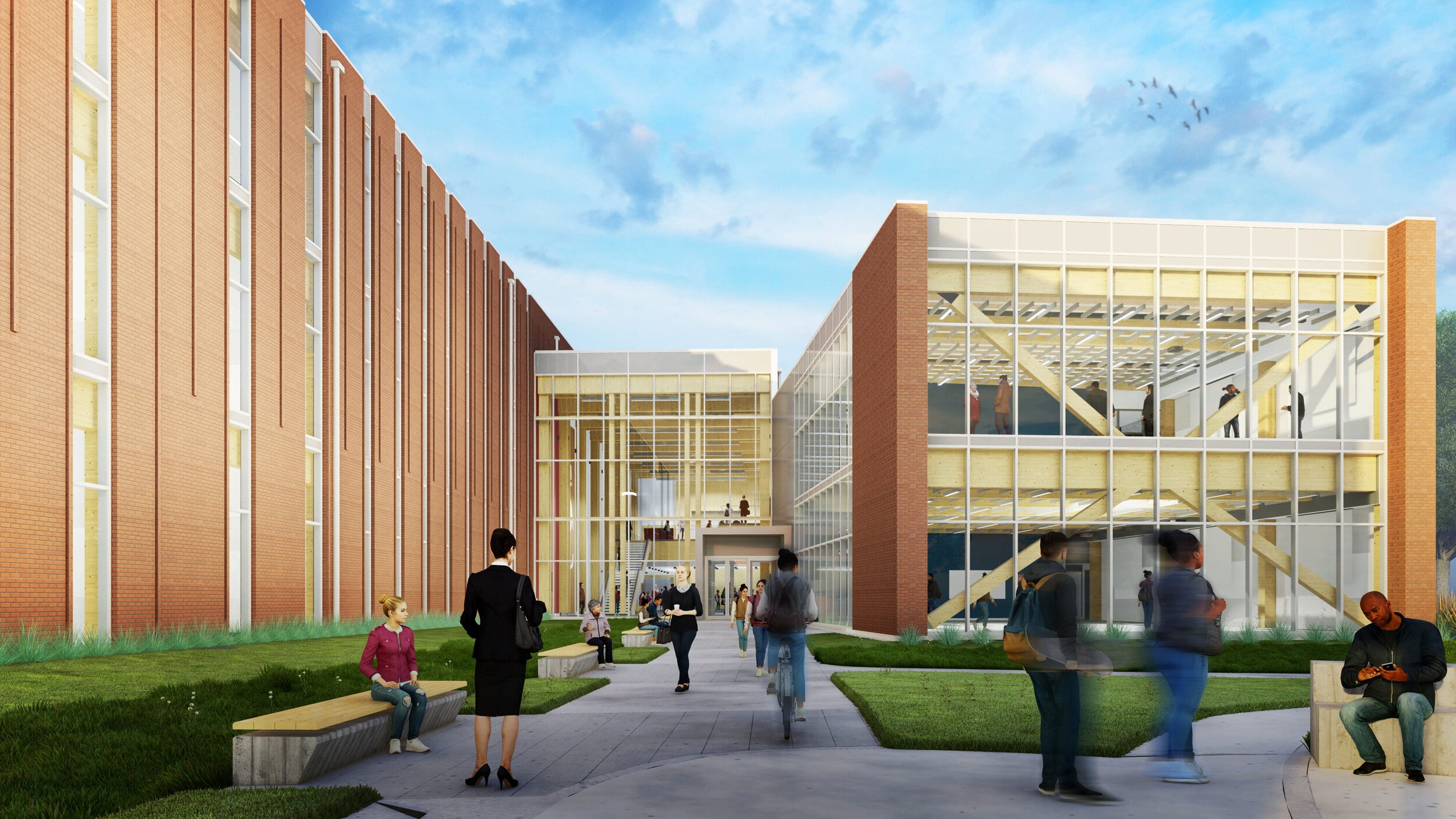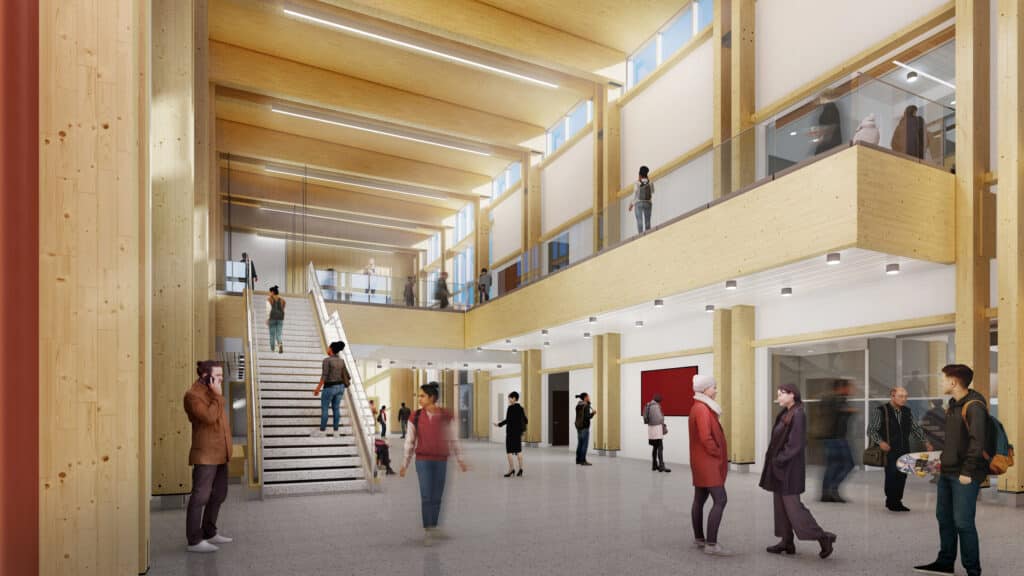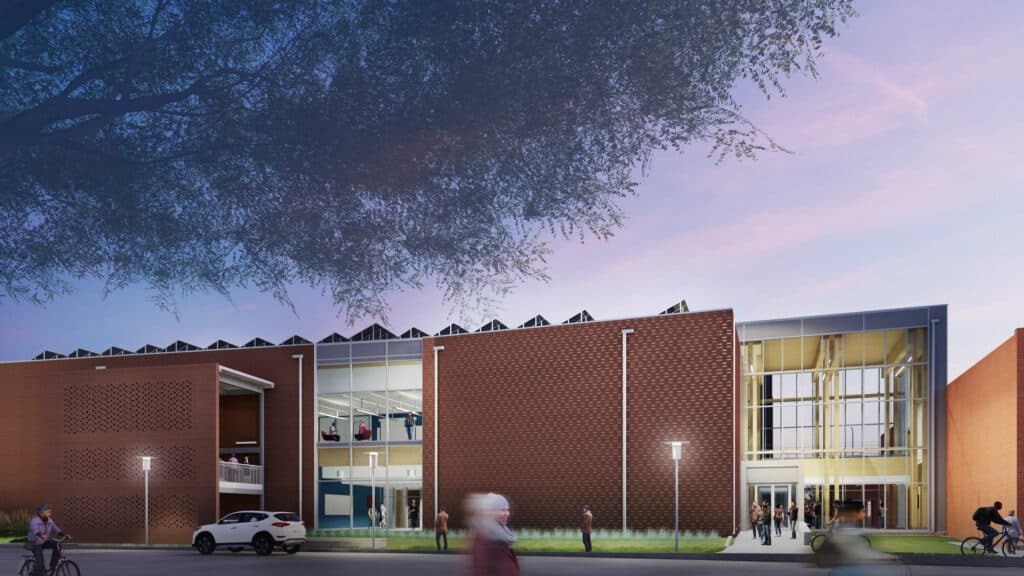JonesDBR is pleased to be working with Kirksey on the design of a new instructional building at the San Jacinto College Central Campus that will represent a first for the region and nation. When its doors open in fall 2021, it will be the largest instructional building in the U.S. constructed from mass timber. San Jacinto College is one of 10 universities that were awarded $100,000 each from the Mass Timber University Grant Program administered by the U.S. Department of Agriculture Forest Service.

The 120,000-square-foot building will be constructed on the existing foundation of an existing building. The mass timber structure will cost less than traditional construction methods, with structural members of laminated wood delivered to the site in a kit form. The new Classroom Building replaces the aging Anderson Tech and Ball Tech on the SJC Central Campus’ quadrangle.
The Classroom Building will provide nearly 60 classrooms for math, pre-engineering, college prep, English, and humanities courses. The building will feature a brick exterior that ties it to the Central Campus’ “legacy” buildings, and its two-story lobby will showcase cathedral-style arches and a stone bas-relief salvaged from the Anderson Tech facade. This bas-relief which includes land survey equipment, a chemical plant, and a compass tells the story of local industries in the College’s early years.

JonesDBR provided MEP engineering services for this near net-zero energy building. To minimize the net energy consumption, the building was designed to be as energy efficient as possible with a high-performance envelope and high efficiency MEP systems. Additionally, much of the roof area will be covered by a solar array which is connected to the electrical service.
The Presentation Area, Lecture Hall, Robotics Lab, and a few of the Student Study and Classrooms feature electrochromic glass which tints to manage light, glare, and occupant comfort in the space. The glass is controlled automatically with project-specific inputs, occupancy sensors and light level sensors to maximize solar energy and minimize heat and glare. This provides a sustainable way to reduce the lighting and HVAC energy usage and costs of the building.

To conserve water, a greywater recovery system will collect the water from lavatories and condensate drains and use the recovered water for make-up to the cooling tower basins at the campus’ central plant. The greywater recovery and reuse system will reduce the water demand and utility costs for the campus.
